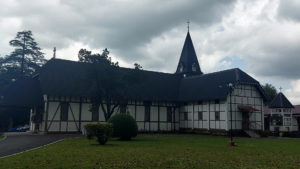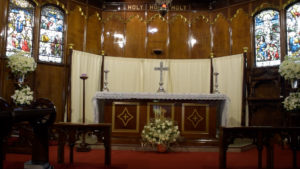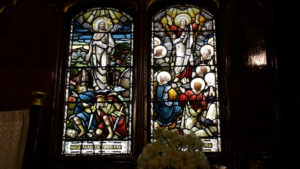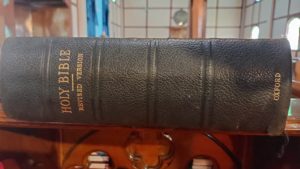By Team, ST YouTube
 Shillong is known for being home to churches of diverse denominations, some of which have crossed 100 years and still stand as firm as the day their foundations were laid.
Shillong is known for being home to churches of diverse denominations, some of which have crossed 100 years and still stand as firm as the day their foundations were laid.
One such century-old structure is the All Saints’ Church at IGP Point in Shillong under the Diocese of the (Anglican) Church of North India. The All Saints’ Congregation celebrated its 125th anniversary in 2002.
In this episode of Shillong’s Iconic Structures, we bring to our readers and subscribers the All Saints’ Church, an archetypal cathedral that was founded in 1876.

Nestled in the heart of Shillong, this colonial structure personifies calmness and peacefulness that drowns the din of traffic and the frenetic pace of the city.
The church is spread across five acres of land that houses the All Saints’ Hall, All Saints’ School, the Bishop’s House and the Diocese of North India – under the name of North East Diocesan Trust Association, and is surrounded by a well-maintained lawn adorned with lush green grass, delightful flowers, foliage and tall trees on all three sides of its boundary.
The premises also accommodates a heritage pine tree that is almost as old as the church. It is noteworthy to mention here that this quintessential pine tree stands out from the rest,  especially during Christmas with its tall frame and grand adornment during the season of celebrations in Shillong.
especially during Christmas with its tall frame and grand adornment during the season of celebrations in Shillong.
Historically, it was in the 1860s during the British Raj, that officers sensed the importance of keeping their faith and Anglican tradition alive which consequently led to the need for a church building on 3rd August 1872 in the presence of Bishop Robert Milman of Calcutta.
The Foundation Stone of the church was first laid by Lord Northbrook, the then Viceroy of India during his visit to Shillong on 22nd August, 1874. It was later consecrated by Bishop Edward Johnson of Calcutta on 18th August, 1877 when he dedicated it to “All Saints”.
 Unfortunately, the great earthquake of 1897 completely destroyed the All Saints’ Church building. However, some parts of the structure as well as objects housed within the church remained intact even after the calamity and they make the church truly historical. These are the altar including the stone font used for baptism, a wooden lectern carved in the shape of an eagle, a Bible that weighs around 5 kilograms and a well-crafted wooden door – all of which are in use till date. The other two intriguing elements within the premises are the piano and the organ – both are as old as the church.
Unfortunately, the great earthquake of 1897 completely destroyed the All Saints’ Church building. However, some parts of the structure as well as objects housed within the church remained intact even after the calamity and they make the church truly historical. These are the altar including the stone font used for baptism, a wooden lectern carved in the shape of an eagle, a Bible that weighs around 5 kilograms and a well-crafted wooden door – all of which are in use till date. The other two intriguing elements within the premises are the piano and the organ – both are as old as the church.



